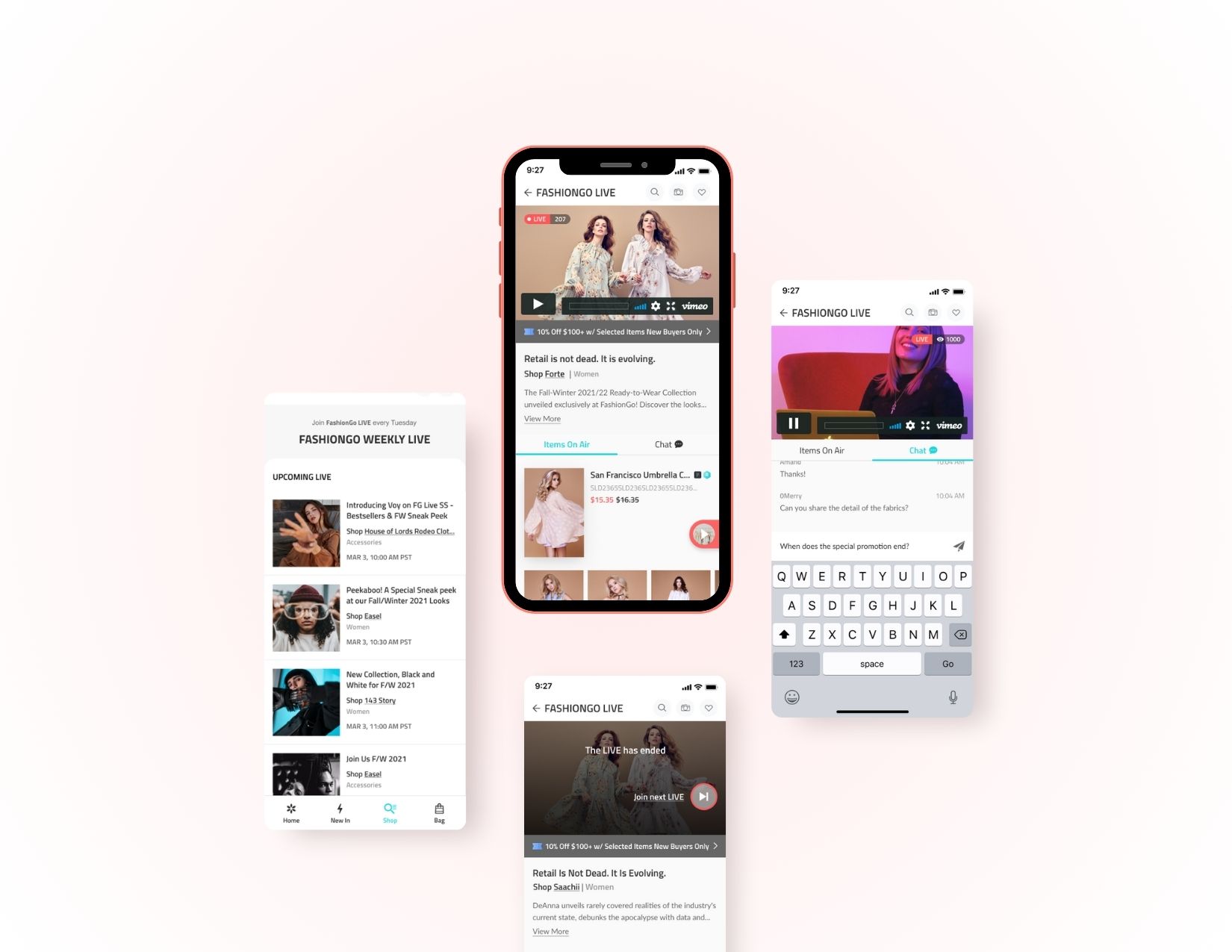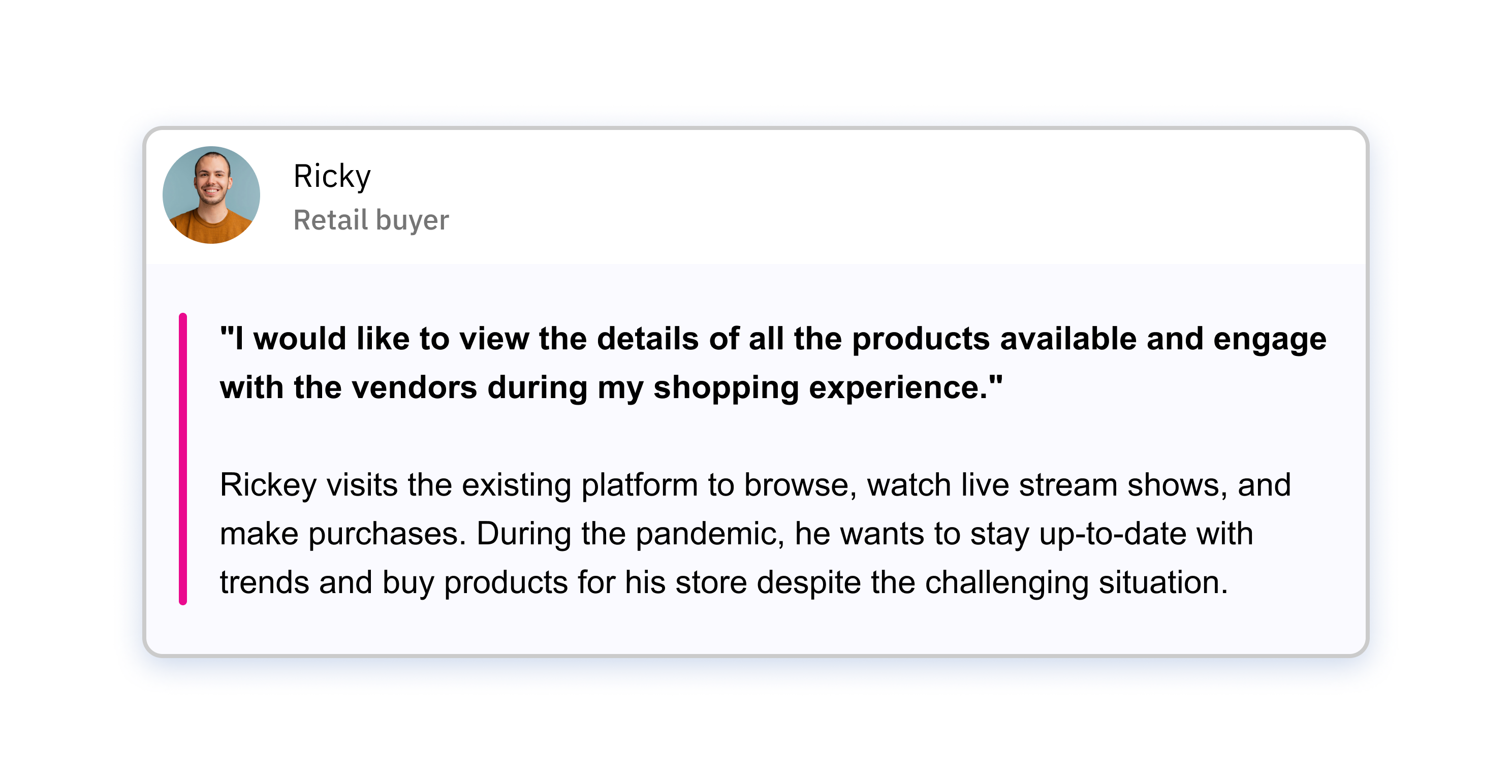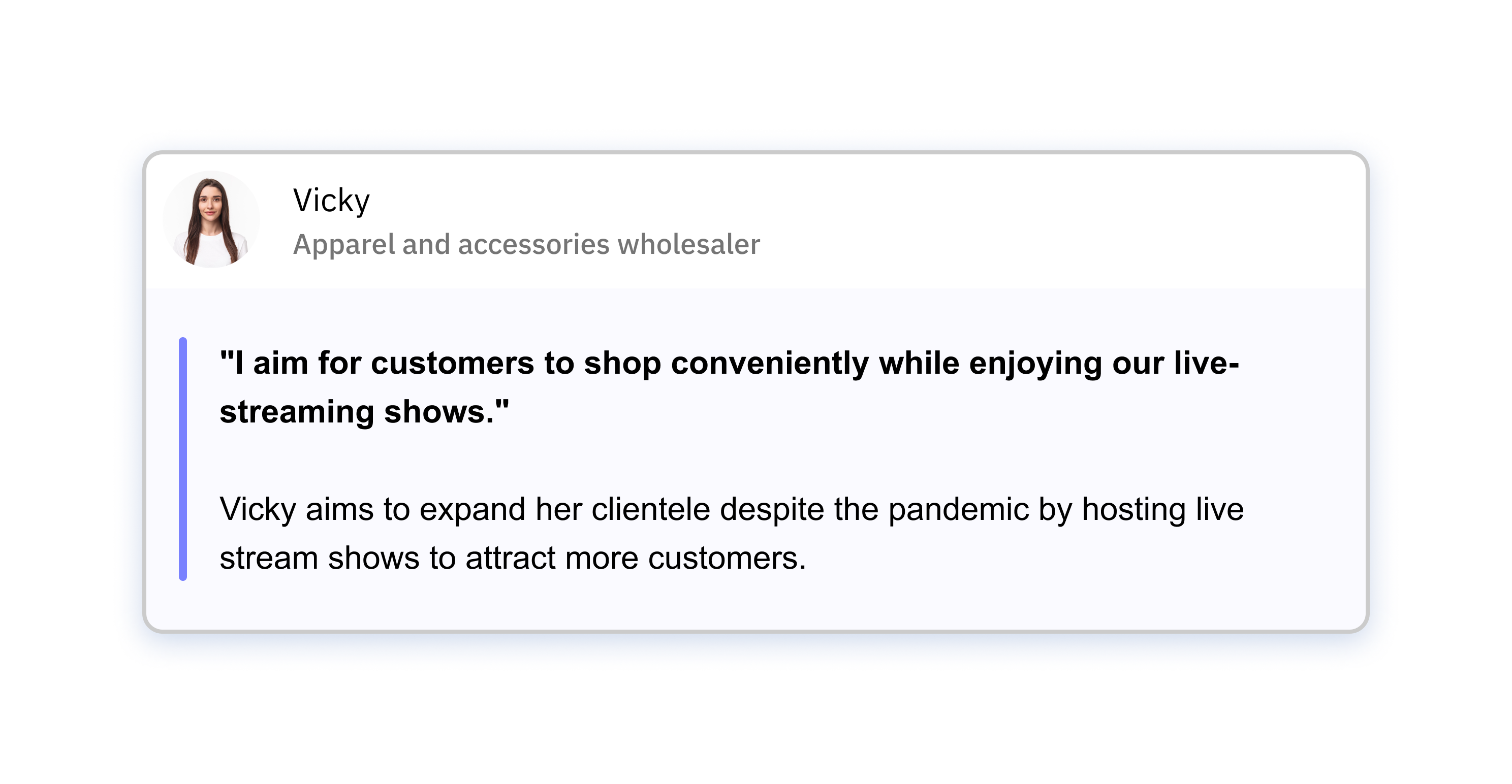03
FashionGo
Online Tradeshow

Overview
FashionGo Live is a cutting-edge online marketplace that connects retailers, wholesalers, and manufacturers in the fashion industry. Beyond being a marketplace, FashionGo Live hosts live events, virtual trade shows, and fashion shows, providing industry professionals with opportunities to stay connected and discover emerging trends.
ROLE
Lead Designer
DURATION
Phase 1: 2 Weeks
Phase 2: 6 Months
STATUS
Live
TEAM
1x UX Designer
1x UI Designer
1x Product Manager
4x Software Developers
1x Data Scientist
4x Digital media Designers
Lead Designer
DURATION
Phase 1: 2 Weeks
Phase 2: 6 Months
STATUS
Live
TEAM
1x UX Designer
1x UI Designer
1x Product Manager
4x Software Developers
1x Data Scientist
4x Digital media Designers
Challenge
With the optimal timing for transitioning the tradeshow experience to an online platform, the opportunity arises to transform it into a weekly event, offering users a consistent and engaging experience.
Scope
The entire process took approximately 10 months. As the lead UX designer for the project, I collaborated closely with cross-functional teams.
Goal
By integrating and organizing user touchpoints, we crafted a seamless and relevant experience on their real estate platform, enabling real-time opportunities for learning, chatting, and shopping. I focused on enhancing user engagement and fostering a sense of community within the platform.

Problem
The project initially began during the pandemic, which rendered in-person attendance at tradeshows impractical. Consequently, we transitioned the platform to a digital format on the FashionGo website.
Process
The project required the development of a new platform with a custom video player and dedicated pages for users to view upcoming, current, and past livestream shows. The process included a significant iteration following user feedback regarding difficulties with signing in to access the videos. I first aligned the requirements with the product manager and business team. Then, the user groups were identified in collaboration with the business and customer care teams, which included two primary user types: vendors and retailers but primary users as vendors.
Problem Statement
How can we offer our customers a smooth live streaming shopping experience?
- Increase the number of live viewers.
-
Build a dedicated live show page to the existing platform for a cohesive experience.
- Build a scalable system for future expansion.
User Persona
The primary users are retail buyers who visit the online tradeshow to make purchases. The secondary users are vendors who collaborate with the digital media team to run online streaming shows.


Early Decisions
Due to a sudden change in plans caused by the pandemic, the team launched an online tradeshow within two weeks. Leadership chose to use Instagram TV (IGTV) for the video section, as it was the quickest solution that didn’t require additional design or implementation time.
Pain Points
User Transition Issues: Bringing users from the FashionGo website to IGTV was challenging due to device conflicts, varying levels of tech knowledge, and their own device settings. Account Creation: Users often needed to create new Instagram accounts, which added an extra barrier. Unanticipated Issues: Several unforeseen problems arose, complicating the user experience further, such as the inability to handle the video issues directly.
![]()
Iteration
Upon releasing the MVP version, we quickly shifted focus to building a weekly tradeshow based on it. The company recognized the potential and decided to launch weekly online streaming shows to attract more customers, similar to Amazon Live and international livestream platforms from South Korea and China.
User Journey
After identifying core pain points from the existing MVP and user feedback, I developed three core user journeys:
Join Live-Streaming Show
Due to a sudden change in plans caused by the pandemic, the team launched an online tradeshow within two weeks. Leadership chose to use Instagram TV (IGTV) for the video section, as it was the quickest solution that didn’t require additional design or implementation time.
Pain Points

Iteration
Upon releasing the MVP version, we quickly shifted focus to building a weekly tradeshow based on it. The company recognized the potential and decided to launch weekly online streaming shows to attract more customers, similar to Amazon Live and international livestream platforms from South Korea and China.
User Journey
After identifying core pain points from the existing MVP and user feedback, I developed three core user journeys:
- Participate in a Live-Streaming Show: Join a live-streaming show that is currently in progress [1].
- Navigate Shows: View past or upcoming live-streaming shows from the previous or following week [2].
- Chat: Interact with vendors, and access coupons live [3].
Join Live-Streaming Show

[1]
![]()
[2]
Navigate Shows

[2]
Chat

[3]
Upcoming Feature
Following the release, I made further improvements to the chat functionality based on user feedback. These enhancements should be implemented as we move forward.
Following the release, I made further improvements to the chat functionality based on user feedback. These enhancements should be implemented as we move forward.

Impact
1,400 vendors exhibited and 756,000 retailers registered
The platform empowers buyers and sellers by offering exclusive merchandise and enhanced purchasing opportunities, while providing real-time visibility into trade show best sellers and trend insights for informed decision-making. It facilitates interactive engagement with vendors, helping users uncover great deals and stay ahead of fashion trends.
The platform empowers buyers and sellers by offering exclusive merchandise and enhanced purchasing opportunities, while providing real-time visibility into trade show best sellers and trend insights for informed decision-making. It facilitates interactive engagement with vendors, helping users uncover great deals and stay ahead of fashion trends.
Reflection
The online weekly tradeshow has been successful. However, given more time, I would have focused on enhancing the chat functionality to better the shopping experience for both vendors and users. Additionally, I would have collected more user feedback to identify and address any shortcomings, allowing us to refine usability in greater detail.